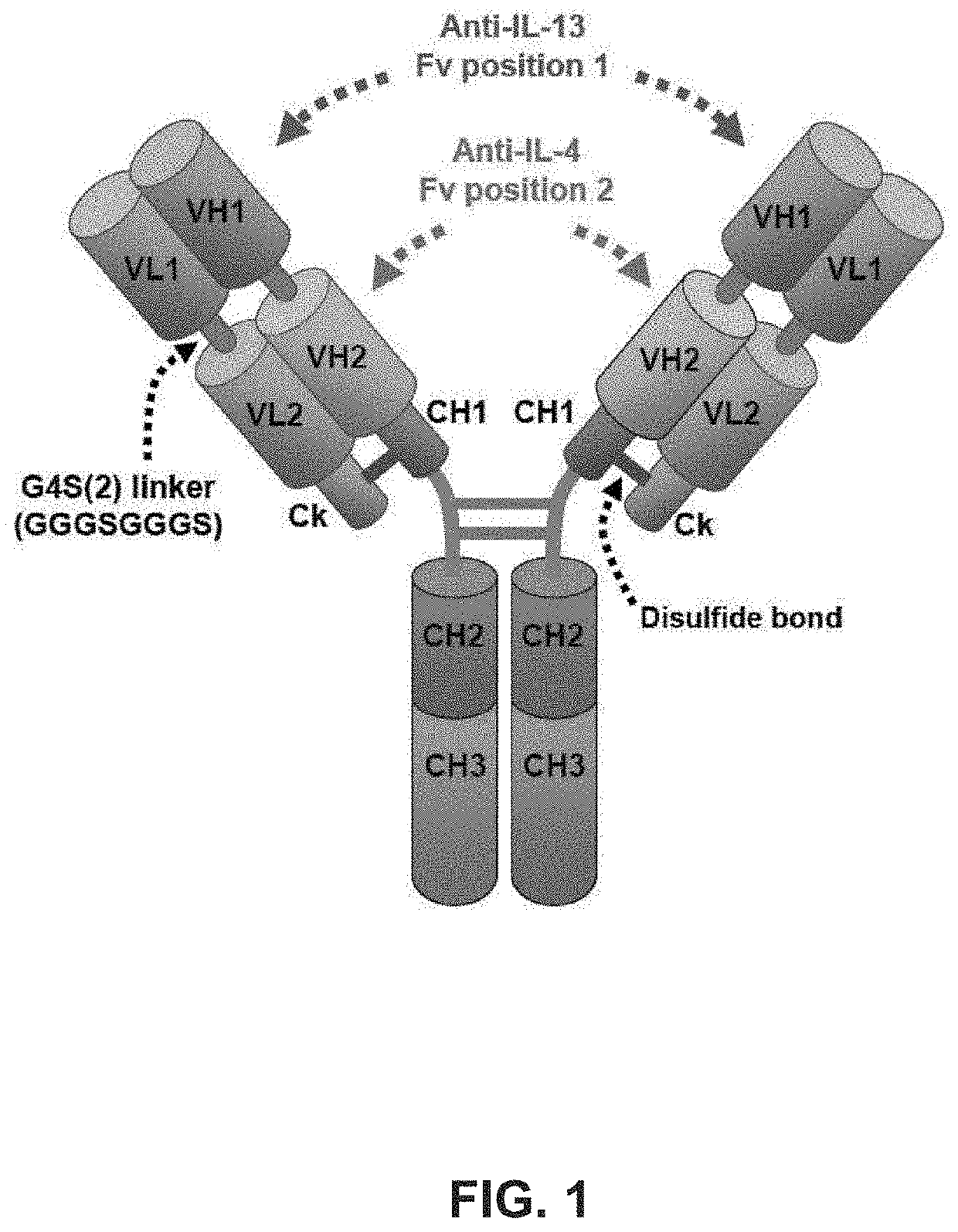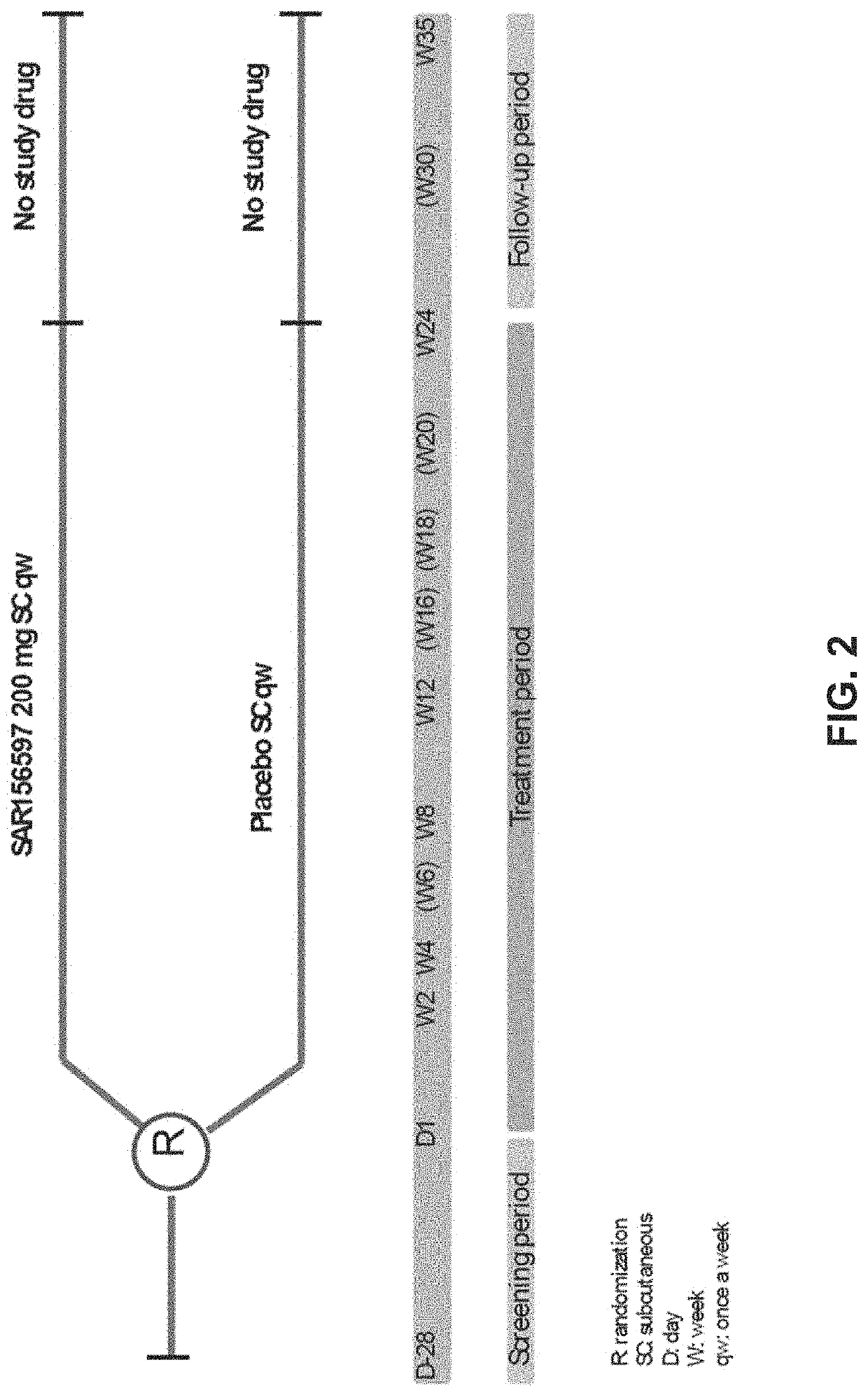Methods for treating systemic sclerosis
a systemic sclerosis and antibody technology, applied in the field of systemic sclerosis treatment methods, can solve the problems of no approved ssc therapy, high risk of side effects, and pulmonary arterial hypertension (pah), and achieve the effects of reducing sclerotic plaques, improving modified rodnan skin score (mrss), and reducing sclerotic plaques
- Summary
- Abstract
- Description
- Claims
- Application Information
AI Technical Summary
Benefits of technology
Problems solved by technology
Method used
Image
Examples
example 1
and Safety of a Humanized Anti-IL-4 / IL-13 Bispecific Antibody, RKB, in the Treatment of Subjects with Diffuse Systemic Sclerosis
[0215]RKB was evaluated in a Phase 2 study (NCT02921971), in comparison with placebo, for efficacy on skin fibrosis of subjects with diffuse systemic sclerosis (dcSSc) when administered subcutaneously for 24 weeks of treatment.
Methods
[0216]A multinational, randomized, double-blind, placebo-controlled, 2 parallel groups, proof of concept Phase 2 study investigated the efficacy and safety of RKB 200 mg administered subcutaneously once a week over a 24 week period to subjects with diffuse SSc. Approximately 94 patients were randomized 1:1 to the following two treatment groups: 1) RKB group (N=47), which received 200 mg weekly subcutaneous administrations of RKB; and 2) placebo group (N=47), which received weekly subcutaneous administrations of placebo. Randomization was stratified based upon the patients' medical history of SSc interstitial lung disease (SSc-I...
PUM
| Property | Measurement | Unit |
|---|---|---|
| Fraction | aaaaa | aaaaa |
| Fraction | aaaaa | aaaaa |
| Time | aaaaa | aaaaa |
Abstract
Description
Claims
Application Information
 Login to View More
Login to View More - R&D
- Intellectual Property
- Life Sciences
- Materials
- Tech Scout
- Unparalleled Data Quality
- Higher Quality Content
- 60% Fewer Hallucinations
Browse by: Latest US Patents, China's latest patents, Technical Efficacy Thesaurus, Application Domain, Technology Topic, Popular Technical Reports.
© 2025 PatSnap. All rights reserved.Legal|Privacy policy|Modern Slavery Act Transparency Statement|Sitemap|About US| Contact US: help@patsnap.com



